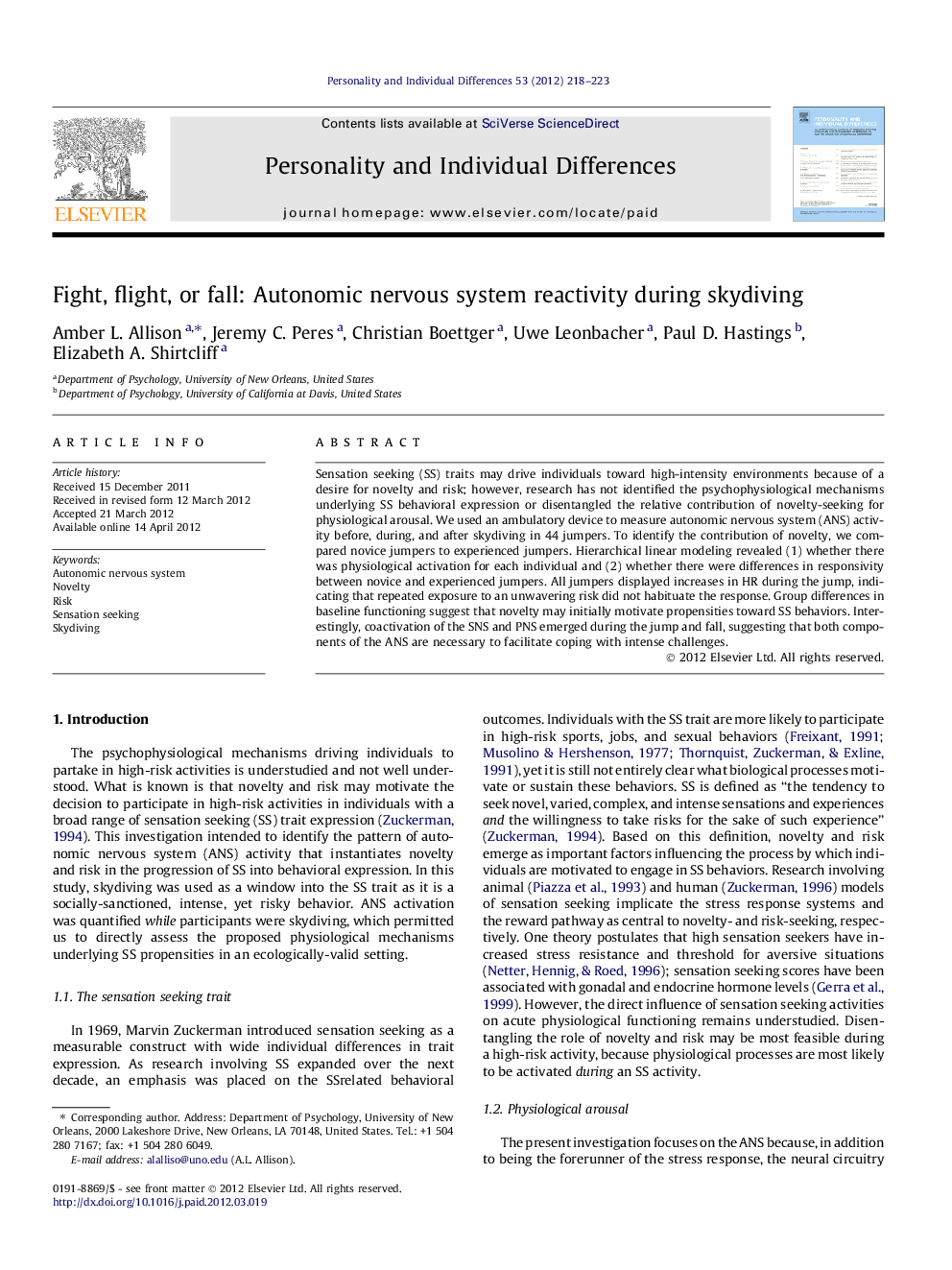| Article ID | Journal | Published Year | Pages | File Type |
|---|---|---|---|---|
| 891003 | Personality and Individual Differences | 2012 | 6 Pages |
Sensation seeking (SS) traits may drive individuals toward high-intensity environments because of a desire for novelty and risk; however, research has not identified the psychophysiological mechanisms underlying SS behavioral expression or disentangled the relative contribution of novelty-seeking for physiological arousal. We used an ambulatory device to measure autonomic nervous system (ANS) activity before, during, and after skydiving in 44 jumpers. To identify the contribution of novelty, we compared novice jumpers to experienced jumpers. Hierarchical linear modeling revealed (1) whether there was physiological activation for each individual and (2) whether there were differences in responsivity between novice and experienced jumpers. All jumpers displayed increases in HR during the jump, indicating that repeated exposure to an unwavering risk did not habituate the response. Group differences in baseline functioning suggest that novelty may initially motivate propensities toward SS behaviors. Interestingly, coactivation of the SNS and PNS emerged during the jump and fall, suggesting that both components of the ANS are necessary to facilitate coping with intense challenges.
► Innovative technology allowed us to chart ANS activity during skydiving. ► The ANS does not appear habituate to inherently risky challenges. ► Coactivation of the SNS and PNS may be necessary in the face of intense challenges.
